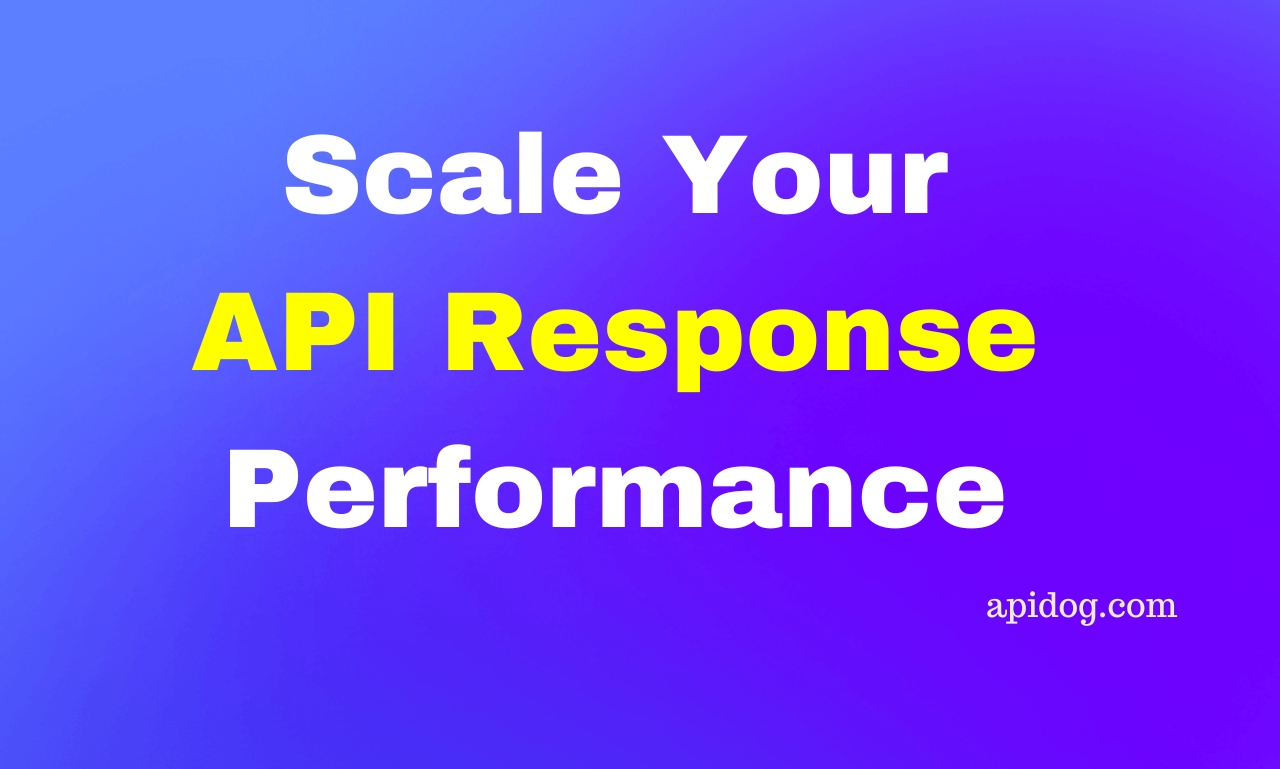Designing APIs with scalability and performance in mind involves leveraging efficient data structures, implementing load balancing, utilizing caching, optimizing databases, and adopting asynchronous processing. These strategies ensure that APIs can handle increasing loads without sacrificing speed or reliability.
In this article, we will explore the various factors that contribute to API latency, including network and server-side aspects, and discuss how to measure latency effectively using different tools and techniques. Furthermore, we will delve into strategies for reducing API latency, such as optimizing network performance, improving server efficiency, implementing caching, and more. Real-world case studies will be presented to illustrate common challenges and solutions. Finally, we will outline best practices for API design and maintenance to ensure optimal performance and scalability. By the end of this article, readers will have a thorough understanding of how to manage and optimize API latency for their applications.
Definition of API Latency
API latency refers to the time interval between when a client sends a request to an API and when the client receives a response from the API. This period encompasses several stages, including the travel time of data packets over the network (network latency), the time the server takes to process the request (server processing time), any waiting period due to server load (queuing time), and the time the client takes to process the response (client processing time). Latency is typically measured in milliseconds (ms) and is a critical metric for evaluating the performance of an API.
Importance of API Latency in Application Performance
API latency plays a crucial role in determining the responsiveness and efficiency of an application. High latency can lead to sluggish performance, causing delays in data retrieval and processing, which can negatively impact the user experience. In scenarios where real-time or near-real-time interactions are essential, such as in gaming, financial transactions, or live data streaming, low latency is imperative. Additionally, in distributed systems where multiple microservices interact with each other, even small increases in latency can accumulate, leading to significant performance degradation. Hence, understanding and managing API latency is vital for developers to ensure that their applications run smoothly and efficiently.
API Latency VS API Response Time
API latency and API response time are both concerned with how long it takes to get a response from an API, but they measure slightly different things:
- API Latency is the time it takes for the initial data packet to travel between the client and the server, and for the server to send the first byte of data back. This is like the handshake at the beginning of a conversation - it's the minimum amount of time it takes to establish communication. Factors affecting latency include physical distance between client and server, network congestion, and the efficiency of any intervening devices like load balancers.
- API Response Time is the total time it takes for the client to receive a complete response from the API after sending a request. This includes the API latency, but also the time it takes for the server to process the request and generate the response. So, it's like the entire back-and-forth conversation you have with the API. In addition to the latency factors, response time can also be affected by the complexity of the request, the server load, and the efficiency of the server-side code.
Here's an analogy: Imagine you're ordering food at a restaurant. The latency would be the time it takes for the waiter to walk to your table after you raise your hand. The response time would be the total time from raising your hand until you get your food, which includes the waiter's walking time and the kitchen's preparation time.
Components of API Latency
Understanding the components of API latency is crucial for diagnosing and optimizing the performance of an API. API latency is influenced by several factors, each contributing to the total time it takes for a request to be sent, processed, and returned. Two primary components of API latency are network latency and server processing time. Each of these components has distinct characteristics and factors influencing their performance.
Network Latency
Network latency is the time it takes for a request to travel from the client to the server and for the response to return to the client. This aspect of API latency is primarily concerned with the journey of data across the network infrastructure. Network latency is influenced by various factors, including the physical distance between the client and server. The greater the distance, the longer it typically takes for data to travel back and forth.
Another critical factor affecting network latency is network quality, which encompasses the bandwidth and congestion levels of the network. Higher bandwidth allows more data to be transmitted simultaneously, reducing delays. Conversely, network congestion, which occurs when many data packets are being transmitted over the network at the same time, can significantly increase latency due to packet loss and the need for retransmission. Additionally, the number of network hops, or intermediary devices that data must pass through between the client and server, can also affect latency. Each hop introduces potential delays, making the route more complex and slower.
Server Processing Time
Server processing time refers to the duration the server takes to handle the incoming request, perform the necessary operations, and prepare the response. This component of API latency is influenced by several factors related to server performance and efficiency. The server’s hardware specifications, such as CPU speed, memory capacity, and storage type, play a significant role in determining how quickly it can process requests. More powerful hardware can handle tasks more swiftly, reducing processing time.
Another crucial factor is the server’s software architecture and the efficiency of the code running on it. Well-optimized code that efficiently handles data processing, database interactions, and other operations can significantly reduce server processing time. For instance, using efficient algorithms and data structures can speed up computation, while proper indexing and query optimization can enhance database performance. Additionally, the overall load on the server affects processing time. A server handling numerous concurrent requests may experience increased processing time due to resource contention, where multiple processes compete for limited CPU, memory, and I/O resources.
Moreover, the design of the server's architecture, such as whether it uses synchronous or asynchronous processing, can influence latency. Asynchronous processing can allow a server to handle multiple requests more efficiently, reducing the time each request spends waiting for processing.
Queuing Time
Queuing time refers to the duration a request spends waiting in line before the server begins processing it. This delay occurs because servers can handle only a limited number of requests simultaneously, based on their resources and configuration. When the number of incoming requests exceeds the server's capacity to process them concurrently, the excess requests are placed in a queue.
The impact of queuing time becomes significant under conditions of high server load and numerous simultaneous requests. During peak traffic periods, such as sales events for e-commerce platforms or major news releases for media sites, servers experience a surge in requests. If the server's capacity is not scaled to handle this increased load, requests pile up, resulting in longer queuing times.
Additionally, high server load can lead to resource contention, where multiple requests compete for limited CPU, memory, and I/O resources. This contention not only increases queuing time but can also slow down the actual processing time once a request begins to be handled. Implementing strategies such as load balancing, where incoming requests are distributed across multiple servers, and auto-scaling, which adjusts the number of active servers based on current demand, can help mitigate the impact of high server load on queuing time.
Client Processing Time
Client processing time is the duration it takes for the client to handle the received response from the server. This phase includes all the operations the client needs to perform after receiving the server's response, such as parsing data, rendering content, and executing any subsequent code.
Examples of client-side processing include:
- Data Parsing: When a client receives a response, the data often comes in formats like JSON or XML. The client must parse this data into a usable format, which can involve converting strings to objects or arrays.
- Rendering: For web applications, client processing often includes rendering the received data into HTML elements and updating the user interface. This can involve manipulating the DOM (Document Object Model) and applying CSS styles.
- Executing JavaScript: Many web applications use JavaScript to perform additional processing on the received data, such as validating input, applying business logic, or making further asynchronous requests based on the initial response.
- Storing Data: Clients might need to store parts of the received data in local storage or indexed databases for future use, which involves additional processing time.
Efficient client-side processing is crucial for maintaining a responsive user experience. Techniques such as minimizing the size of the data payload, optimizing JavaScript code, and using efficient data structures can help reduce client processing time. Additionally, offloading heavy processing tasks to web workers or background threads can prevent the main user interface from becoming unresponsive, ensuring smoother interactions.
Measuring API Latency
easuring API latency is the first step towards understanding and optimizing the performance of your APIs. By leveraging the right tools and techniques, developers can pinpoint latency issues and implement effective solutions to minimize delays.
Effectively measuring API latency involves combining specialized tools and robust techniques. These tools not only help in tracking and analyzing latency but also provide insights that guide performance improvements.
Measuring with Apidog
Apidog is a comprehensive API design, testing, and documentation tool. It allows developers to simulate API requests and measure the latency of responses. With its intuitive interface and detailed reports, Apidog helps identify latency bottlenecks and streamline API performance.

Apidog makes the process of measuring API latency easy. Give it a try and watch your response & latency time response from within one single dashboard.
Measuring with Other tools;
There are quite other tools such as Postman, Pingdom, Datadog & and more. We've compiled a list for you to review and choose the one that aligns with your interest and your company's/project idea.

Techniques for Reducing API Latency
Ensuring that your APIs are not only functional but also scalable and performant requires adhering to best practices in design and maintenance. These practices help in maintaining high performance, reducing latency, and ensuring that your APIs can handle increased load without compromising on responsiveness.
Below, is an article that clearly explains how to Accelerate API Performance.
It covers Identifying Performance Bottlenecks, Database Queries, Inefficient Code, Network Latency, & how Third-Party Integrations can affect API responses.

Conclusion:
So, in summary, understanding, measuring, and optimizing API latency is an ongoing process that demands attention to detail and a proactive approach. By adhering to best practices in API design and maintenance, developers can deliver APIs that not only meet user expectations but also stand the test of time as demand scales and technology evolves. Through continuous improvement and a commitment to performance, you can ensure your APIs provide a seamless, efficient, and satisfying user experience.
I hope you found this article helpful. If have any questions, don't forget to reach out. I'm happy to help!




